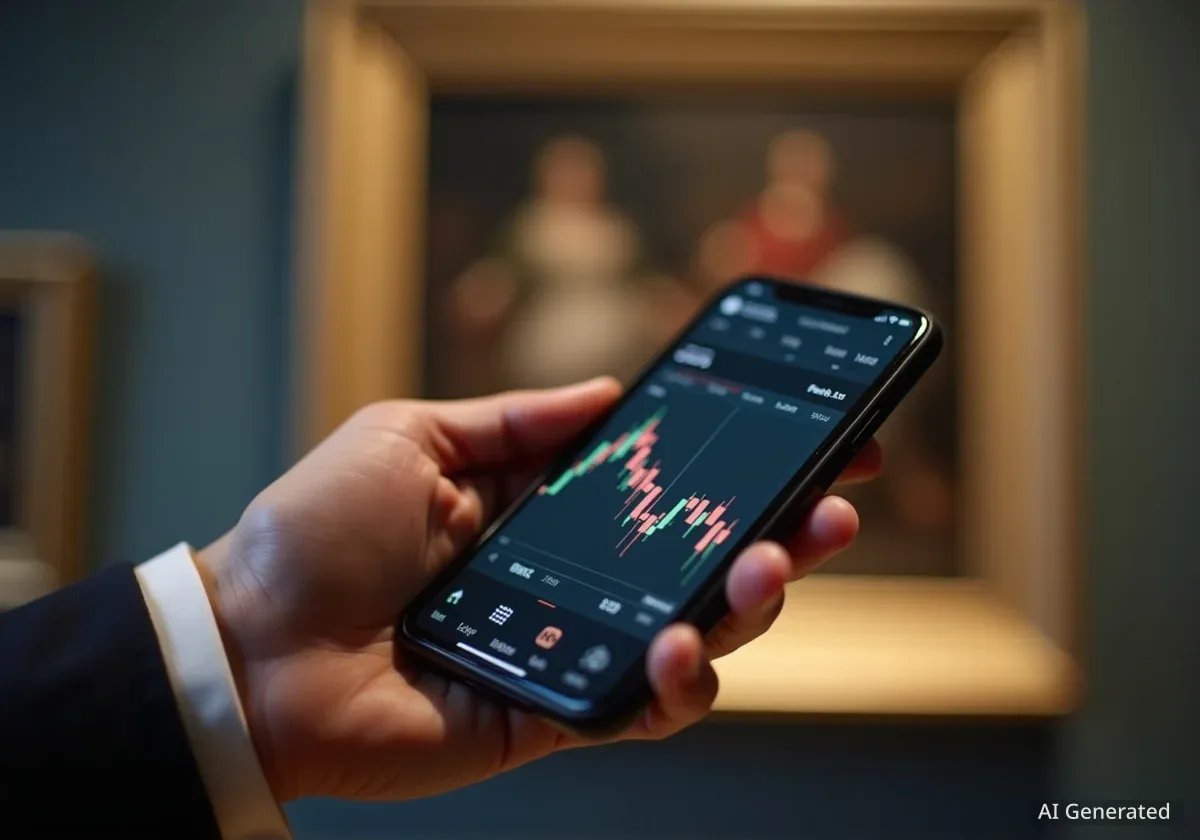Thomas S. Kaplan, a billionaire philanthropist and art collector, is exploring a plan to turn his extensive Leiden Collection into a public asset. The collection, which features significant Dutch Golden Age paintings, may be fractionalized and offered through an Initial Public Offering (IPO). This move aims to provide a future for the art and allow a broader public to own a piece of it.
Kaplan believes that scarce assets like major artworks will increase in value. He sees this as an opportunity for millions of people to potentially own a share in a Rembrandt painting. The initiative, currently named Project Minerva, is expected to launch in the first half of 2026.
Key Takeaways
- Thomas S. Kaplan plans to fractionalize the Leiden Collection.
- The collection may go public via an IPO, dubbed Project Minerva.
- This aims to create a succession plan and broaden art ownership.
- The collection includes 17 Rembrandts and a Vermeer.
- Kaplan hopes to launch the plan by early 2026.
The Vision for Project Minerva
Kaplan shared his vision with The Art Newspaper, stating his intention to take the entire collection public. He explained that assets like great art are truly scarce. He believes their value will grow significantly due to the large amount of money seeking investment opportunities. Kaplan sees this as a strong value proposition for investors.
The project is named Minerva, after the Roman goddess of wisdom and war. This name also references Rembrandt’s 1635 painting, Minerva in her Study, a prominent piece within the collection. The Leiden Collection itself is named after Rembrandt’s hometown.
Collection Highlights
- Total Works: 220 Dutch Golden Age paintings
- Rembrandts: 17 works
- Vermeer: Thought to be his last painting
- Other Masters: Works by Gerrit Dou, Jan Lievens, Jan Steen, Frans van Mieris
Building the Leiden Collection
Over the past two decades, Kaplan and his wife, Daphne, built the Leiden Collection. It comprises 220 significant Dutch Golden Age paintings. Among these are 17 works by Rembrandt, which is a substantial number for a private collection. The collection also features what many believe to be Vermeer’s final painting. Other notable artists include Gerrit Dou, Jan Lievens, Jan Steen, and Frans van Mieris.
Initially, the Kaplans lent their artworks anonymously to various museums. Later, they decided to send masterpieces from the collection on a global tour. This tour included prestigious venues such as the Louvre in Paris, the State Hermitage Museum in St. Petersburg, the Long Museum in Shanghai, the Louvre Abu Dhabi, and the H’Art Museum in Amsterdam. The next scheduled stop for the collection is the Norton Museum in West Palm Beach, Florida, beginning October 25.
A Solution for the Future of Art
Kaplan stated that fractionalizing the collection offers a practical succession plan for his family. He has three children, two of whom are of college age. However, they have expressed little interest in the material objects themselves. While they appreciate what their parents have achieved with the collection, they are unsure how to manage it in the future. They asked Kaplan to find a lasting solution.
The inspiration for this unique solution came to Kaplan during the COVID-19 pandemic. He observed the rise of Non-Fungible Tokens (NFTs), which sparked the idea of fractionalizing his art collection. Kaplan made his fortune by investing in rare assets, particularly silver and gold. This background reinforces his belief in the importance of scarcity in value.
"I'm looking to see whether I can take the entire collection public. I think assets, such as really great art, are going to multiply manyfold because they are truly scarce, and there's so much money sloshing around that will need a home and this is a great value proposition. To my mind the best way to evangelise for Rembrandt is by giving millions, maybe tens of millions, of ordinary people the opportunity to own a Rembrandt."
Kaplan's Investment Philosophy
Thomas Kaplan's career has focused on investments in rare commodities. His success in gold and silver markets highlights his understanding of value derived from scarcity. He applies this same principle to art, viewing masterpieces by artists like Rembrandt and Vermeer as strong "brand names" with enduring value.
Rembrandt and Vermeer as Brands
Kaplan views artists like Rembrandt and Vermeer as significant "brand names" in the art world. He points out that both artists consistently appear on top ten lists of greatest artists. He proudly notes, "I own both franchises!" He also highlighted that his collection holds 17 of the approximately 40 Rembrandts believed to be in private hands worldwide. This makes his collection a critical holding of the artist's work.
In 2020, Kaplan took steps to trademark several names, including "Rembit" and "Rembitcoin." These names suggest the type of tokens that might be offered as part of the fractionalization plan. He anticipates launching this plan in the first half of 2026.
The Future of Art Ownership
The shares created through this fractionalization would be tradable. Kaplan mentioned the possibility of them being listed on an exchange, such as the New York Stock Exchange. His family intends to retain a controlling interest in the collection. This is to ensure that its primary mission, which is to serve as the Old Masters' only dedicated lending library, remains intact.
As a devoted "Rembrandt evangelist," Kaplan sees this plan as more than just a solution for the collection's future. He believes it will also secure Rembrandt's legacy for centuries to come. He stated that this initiative could ensure the next 400 years of Rembrandt's prominence. Furthermore, it aims to introduce the Dutch Old Master to a much wider global audience.
"If we can allow people to take an ownership interest in Rembrandt, they will, by definition, take interest in Rembrandt, and that's how I guarantee that Rembrandt remains one of the most important artists of all time. And Project Minerva becomes, I think, the ultimate expression of my ability to give back."
Kaplan's vision is that by allowing people to own a part of Rembrandt's work, they will naturally develop a deeper interest in the artist. This, he believes, will solidify Rembrandt's position as one of history's most important artists. He views Project Minerva as the ultimate way to give back to the art world and the public.




